|
Disclaimer: We are not connected with Bryan Cohen in any way and have no financial interest in his book. This review has not been paid for by Bryan Cohen or anyone else. 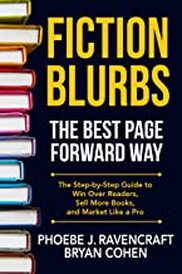 This is a review of one of two books by Bryan Cohen that we think should be read in the right order. This first one, “Fiction Blurbs: The Best Page Forward Way” is about improving your blurb writing technique so that readers feel more compelled to buy your book. The second book, “Self-Publishing With Amazon Ads” teaches you about increasing the profitability of your advertising campaigns. What links the two? One of the “tweaks” that the second book suggests to increase sales is to improve your book’s blurb. So, if that is a tip for increasing sales it seems sensible to us to try to improve our blurbs before we started spending money on advertising, so that we don’t spend money on advertising only to find out that our blurbs might need improving. 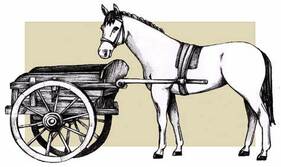 Still not quite right! Still not quite right! It is putting the metaphorical horse in front of the cart rather than behind it. But don’t worry, we’ll be reviewing “Self-Publishing With Amazon Ads” next week, so that you can get the whole picture. Having said this book is by Bryan Cohen I must now correct myself and tell you that it is actually written by Phoebe J Ravencraft, an associate of Bryan Cohen, who works for his company, Best Page Forward. But they get joint author credits. First of all, what about the authors’ credentials for writing a book such as this? Best Page Forward has written over 5,000 book blurbs for self-published authors. Phoebe herself has written or overseen the writing of around 3,000 of those. She comes from an advertising copywriting background. They have gathered plaudits from satisfied customers and the blurbs they have created have stood the test of time to sell books. I think we can safely say that they know what they are talking about.  In one of our marketing blogs, repeated last autumn, we advised selling the sizzle, not the sausage. In other words, we recommended not trying to describe your book to the reader but trying to excite their imagination about how dramatic/entertaining/insightful/hilarious (insert other adjectives of your choice) your book is going to be. That is exactly what this book strives to do. That was good enough to convince me to buy the book. If it does that for us, the money spent on it will be repaid just by selling two extra copies of one of our books. As both an author and a publisher I have written dozens of book blurbs, so I thought I knew what I was doing. We had done plenty of research to try to find out what made a good blurb and we followed the lessons we had learnt, but there was still a nagging doubt in our minds that we might not be getting it right. Our sales suggested that there was something amiss. We were getting lots of clicks on our adverts, but they weren’t converting into as many sales as they should. 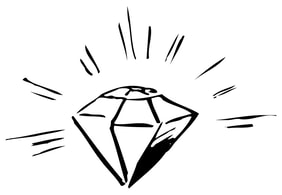 So, when I started to read this book, pennies started to drop to tell me that doing what other people were doing was the problem. What we needed to do was to be different, to make our blurbs stand out from the crowd. Readers are too easily distracted by metaphorical shiny things, so the solution to that is for our book blurbs to be the shiny thing that distracts them from other books. Chapter by chapter, Phoebe (if she’ll permit me the liberty of addressing her by her first name) lays out the elements that go into writing the “killer” book blurb that we wanted, and then how to structure the different elements to get the most out of them. It wasn’t that the blurbs we wrote were actually bad. After all, we're conforming to what we understood to be “best practice”. It was more that they could have been so much better. For the most part, they were selling the sausage, not the sizzle. They described the book, but they didn’t describe the emotional ride that was contained within the book. Emotions, it turns out, are the sizzle that sells the sausage. 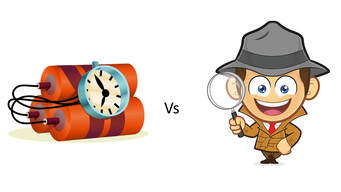 I sort of knew that already, because I have always believed that books should be character led, not plot led. Readers engage with the characters at an emotional level and come to care about them and that is what keeps them turning the page, not the plot itself. And that emotional engagement, it turns out, is what has to be at the heart of the book’s blurb. There is a lot more to it than that of course. Conflict, jeopardy, structure and vocabulary all play a massive part, but without the emotion the book still won’t sell. I’m not going to ruin the book’s sales by telling you what tools and techniques are taught within its covers. You’re going to have to pay to find out, just as we did. Suffice to say that every page provides something new to learn. Even if your blurbs are already good I feel quite confident saying that you will learn something new from this book. Readers will note that I have given the book only 4 stars where, from what I have said, you might expect that it should be worth five stars. That isn’t because of the lessons that the book teaches. It is only because of the style in which those lessons are taught. "As an author and as a publisher I have limited time available" The author uses well known books and films to illustrate the lessons and there is nothing wrong with that. Many of those books and films are her personal favourites. Again, there’s nothing wrong with that. However, at times I found that the point being made was laboured and that the author was getting rather carried away with her own passions. While such enthusiasm is to be admired, it can be a little too much when the reader has already grasped the key message and only wants to move on to the next lesson. As an author and as a publisher I have limited time available, and this book took a little more time to read than was essential. Perhaps it was designed to pad the word count, so the reader thinks they’re getting value for money, but the real value isn’t in the number of words, it’s in the messages. But that is a minor criticism and I feel secure in saying that anyone buying this book will have their money repaid quite swiftly if they learn the lessons and apply them to their blurb writing. 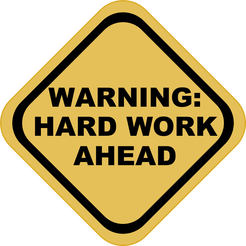 So, what are my main takeaways from this book? The first one I sort of already knew but being reminded of it didn’t hurt. The purpose of the blurb is not to describe the book; it is to sell the book, which is an entirely different technique. According to Phoebe, you don’t even have to read the book to be able to write its blurb. Secondly, creating a good blurb isn’t easy and it requires practice and hard work. I soon discovered that when I tried to re-write the blurbs for the books we publish. What I thought would be about ten minutes work per book turned out to take considerably longer and they still aren’t perfect (though they are better). Finally, a good blurb taps into your emotions and raises the “risk” level for the protagonist so high that the reader has no choice but to buy the book to find out what happens. Get that right and the book will sell. But I’m sure you want to know if re-writing the blurbs for our books made any difference to our sales.  First of all, judge for yourself. If you go to our “Books” page we have re-written most of our blurbs. I’m not suggesting they are perfect. In fact, I’m sure that Phoebe J Ravencraft would suggest some improvements if she were to read them. But they are different to our previous style. Just ask yourself one simple question – having read any of those, do you feel tempted to buy the book? More importantly, has our conversion rate for sales improved? We actually got an instant return for one book. The day we changed the blurb it got its first sale in months. Coincidence? Possibly, but we think it may have been the new blurb. Then a second book got its first sale in months, followed by a third. Too many for coincidence; this was a trend. I’m not going to pretend any of those books went from non-seller to best-seller overnight as a result of the tweaks we made - but “Fiction Blurbs: The Best Book Forward Way” paid for itself within a week and is still paying for itself in terms of sales. I highly recommend “Fiction Blurbs The Best Book Forward Way” by Bryan Cohen and Phoebe J Ravencraft. To find out more about the book, click here. Next week we’ll be reviewing another book which could help you to sell a lot more of your own books, so be sure not to miss our blog. In fact, why not sign up to our newsletter to make sure you don’t miss it. We’ll even send you a free ebook if you do. Just click the button below.
0 Comments
Leave a Reply. |
AuthorThis blog is compiled and curated by the Selfishgenie publishing team. Archives
March 2025
|

 RSS Feed
RSS Feed